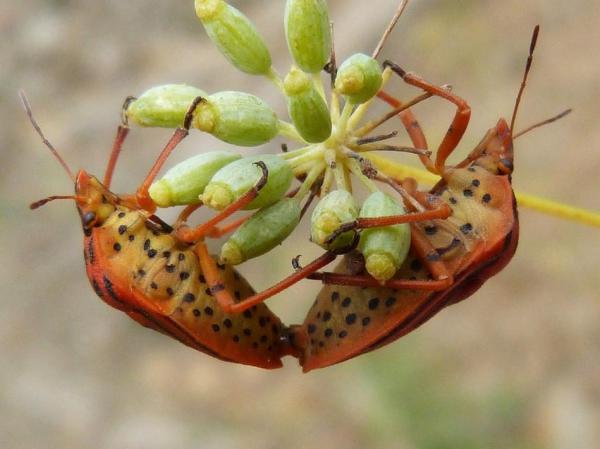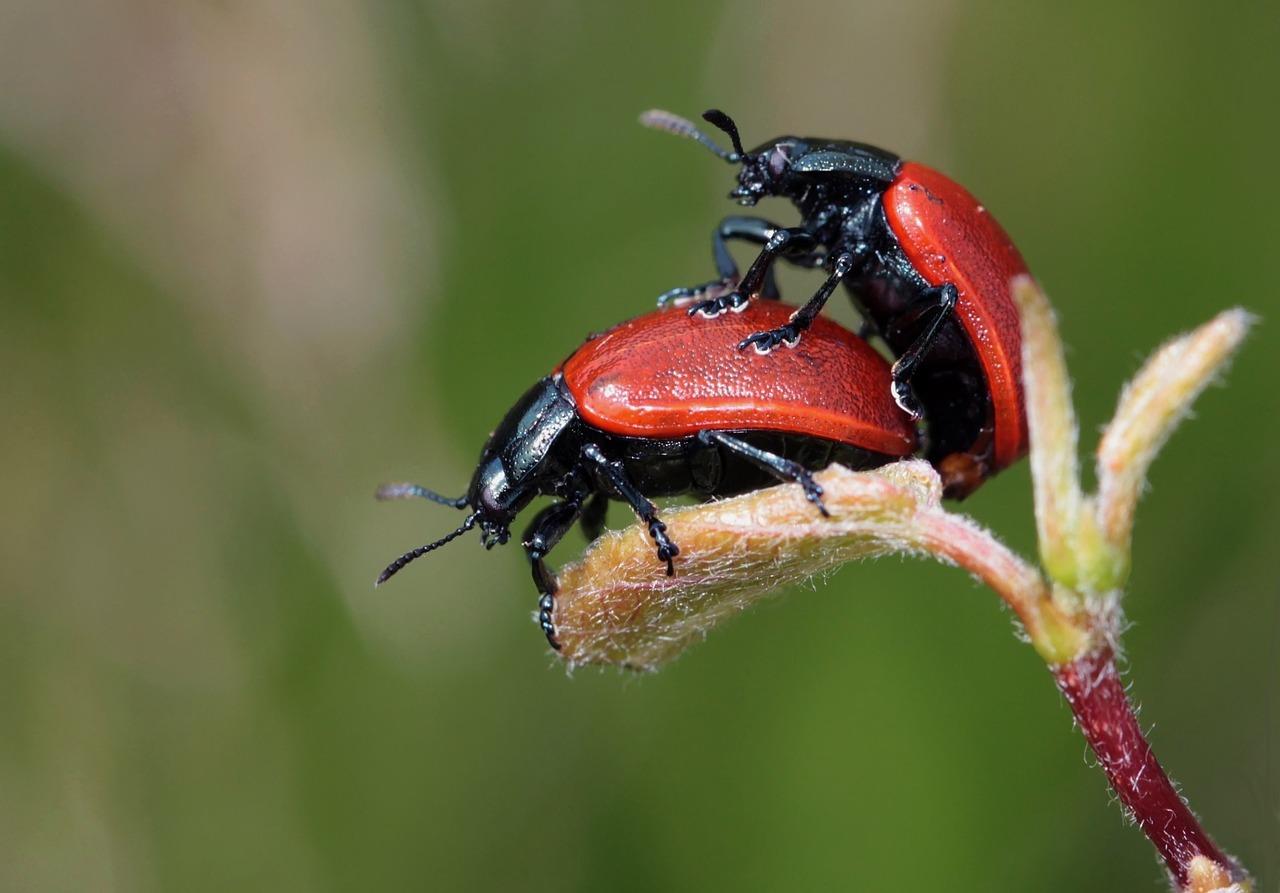Types of Animal Reproduction - Sexual and Asexual


All living beings on this planet need to reproduce to perpetuate their species, but not all animals reproduce in the same way. Moreover, not all individuals of a species will reproduce. This is either because they don't have the opportunity or they were never intended to do so. For example, animals within eusocial societies are assigned certain functions and only some of these animals will be purposed for reproduction. Ant colonies are an example of one such eusociety. Conversely, solitary animals may seek and mate and fight for the right to reproduce and proliferate their own genes.
These examples of different types of animal reproduction from AnimalWised are here to show you the incredible range and diversity of life. They can be categorized as either sexual or asexual reproduction, but there are other types we need to consider.
What is animal reproduction?
Animal reproduction is a complex and varied set of processes which all have the same goal of producing offspring. It requires various physical and behavioral transformations which are controlled by hormone production and other factors.
For animals to reproduce, they need to reach sexual maturation. This is the point when the animal develops the biological facilities to reproduce. The length of time this takes depends on the species. Some animals may take years to reach sexual maturity, but others can take much less time. For example, the wild African killifish currently stands as the vertebrate with the fastest rate of sexual maturation, taking about 2 weeks to reach maturity[1].
Sexual maturation in animals begins with the establishment of the sexual organs and the formation of gametes. Gametes are the building blocks required to create life. In males this is known as spermatogenesis and ovogenesis (sometimes oogenesis) in females. After sexual maturity occurs, the animal will often need to search for a partner to reproduce. However, despite having individual sex organs, in some rare conditions, it is possible for an animal to reproduce without mating with a partner. This is known as asexual reproduction in animals.
Complex animals tend to reproduce sexually, something that can only occur after a certain amount of development. Learn about this process in our article asking how old do dogs have to be to breed?
Types of animal reproduction
In nature there are several types of animal reproduction. Each of them has defined characteristics which help to distinguish between species. Broadly speaking, we can say there are three main types of animal reproduction:
- Sexual reproduction in animals
- Asexual reproduction in animals
- Alternate reproduction in animals
Within these types of reproduction are various processes which lead to the creation of offspring. Fertilization, production and other factors determine the way in which the animal reproduction is carried out. However, the basics can be categorized into these groups.
Learn the specifics of dolphin mating and reproduction in our related guide.

Types of sexual reproduction in animals
Sexual reproduction in animals is characterized by requiring two individuals, one female and one male. The female will produce ovules formed by ovogenesis in her ovaries. The male creates sperm in the testicles which are generally characterized as being small and very mobile. These sperm perform the function of fertilizing the ovule and forming a zygote. This zygote will progressively develop to create a new unique and complete individual.
Fertilization of the eggs with sperm can occur both inside or outside the body, known as internal or external fertilization, respectively. Non-animal organisms such as plants carry out different types of fertilization, e.g. pollination. Most animal species which reproduce sexually are heterogamous. This means the female gamete (the ovum) is larger than the male gamete (the sperm).
Internal fertilization in animals
During internal fertilization, the sperm is inserted into the female's genitals via the male genitals. The sperm then travels through the female's reproductive system in search of an egg. When the sperm reach the egg, they fuse together and create the zygote.
The embryonic development after internal fertilization doesn't necessarily take place inside the body. In viviparous animals, the offspring develops inside the body if a parent. If embryonic development occurs outside the body of a parent, they are considered oviparous animals. The eggs can exist in various forms, whether they have the hard shell of a bird egg or the soft structure of frogspawn.
In the vast majority of animal species, the parent of viviparous animals which carry the embryo is the female. However, in some animal species such as the seahorse[2], it is possible for the male to carry the embryo to term.
Learn about the best dads in the animal kingdom in our related article.
External fertilization in animals
Animals which reproduce through external fertilization release their gametes into their environment. This is more common to aquatic environments than terrestrial. Both gametes, the ovules and sperm, fertilize outside of the animal's body.
The most important characteristic of this type of reproduction is that individual offspring carry in their genome the genetic material of both parents. In this way, sexual reproduction helps to increase the probability of long-term survival of a given species. This is because the greater the genetic variance, the greater likelihood of survival.

Types of asexual reproduction in animals
Asexual reproduction is characterized by the absence of another individual of the opposite sex. This is why asexual reproduction does not necessarily involve germ cells, i.e. both ovules and sperm. In most cases they are somatic cells, meaning they are not cells which transmit genetic information. Instead, they have the capacity to divide and create new cells this way. Somatic cells are any cell in a multicellular organism which isn't a germ cell or stem cell. They make up the normal tissue of animal bodies.
Types of asexual reproduction in animals
As we continue, we will see there are several types of asexual reproduction in animals:
- Gemmulation: this is the typical asexual reproduction of marine sponges. A particular type of cell known as a gemmule can develop into a new organism. This occurs via a process known as budding and the gemmules are very resistant to environmental damage.
- Sprouting: in hydras, a specific genus of the family Cnidaria, asexual reproduction occurs by sprouting. On the surface of the animal, a specific group of cells begin to grow which form a new individual. This offspring can separate from the parent or remain united.
- Fragmentation: this is one of the types of animal reproduction carried out by starfish or planarians (a class of flatworm). Their body can be segmented into several pieces which each give a new individual.
- Parthenogenesis: in this type of asexual animal reproduction, a germ cell, the ovule, is involved. Although not fertilized, this can develop and create a female individual identical to their mother.
- Gynogenesis: this is a rare type of asexual reproduction, which only occurs in certain amphibians and bony fish. The male donates his sperm, but this is only used as a stimulus for the development of the ovule. It does not actually provide its genetic material.
Animals tat carry out asexual reproduction
Some of the animals with asexual reproduction that we can find in nature include:
- Hydra
- Wasps
- Starfish
- Sea anemones
- Sea urchins
- Sea cucumbers
- Sea sponges
- Amoebas
- Salamanders
In addition to their reproductive abilities, learn how starfish eat with out guide to sea star diet.
Alternate reproduction in animals
Although not very common, it is also possible for animals to engage in alternate reproduction. During this type of reproductive strategy, sexual reproduction is alternated with asexual reproduction.
This type of reproduction is not as common in the animal kingdom as it is in plant life. We can find this behavior in certain eusocial societies such as ants and bees. While it is rare in the animal kingdom in general, most types of animals with alternate reproduction are invertebrates. There are some very few species of amphibians, reptiles and birds which can alternate sexual and asexual reproduction. The Komodo dragon is one of them.
The alternate strategy will depend on the species, the individual animal and environmental factors. For, example, an animal which cannot find a mate, but has the ability of parthenogenesis might reproduce asexually.

Human interference in animal reproduction
So far the types of animal reproduction we have discussed occur freely in nature. However, human beings have interfered in animal reproduction for various reasons. This may have been for research purposes, breeding pets or even conservation of animal species which are in danger of extinction. Interference doesn't always have a negative connotation. It does always require careful consideration which is often overlooked.
Artificial insemination is a common type of artificial animal production. It is used in horse and dog breeding to sire offspring for various purposes. Perhaps they want to continue a certain pedigree breed or maybe there is a champion race horse they want to use to create others.
In vitro fertilization (IVF) has been used in laboratory environments for years. The use is often for research into genetics, medicine or almost any field of science. IVF in animal studies may even be used as a way to investigate how we can improve it for human assisted reproductive technologies (ART)[3]. IVF involves taking the gametes and fertilizing them outside of the body (usually in a test tube), before replacing them in the body and letting the animal continue the pregnancy.

If you want to read similar articles to Types of Animal Reproduction - Sexual and Asexual, we recommend you visit our Facts about the animal kingdom category.
1. Vrtílek, M., Žák, J., Pšenicka, M., & Reichard, M. (2018). Extremely Rapid Maturation of a Wild African Annual Fish. Current Biology, 28 (15), 822-824.
https://www.cell.com/current-biology/fulltext/S0960-9822(18)30822-4?_returnURL=https%3A%2F%2Flinkinghub.elsevier.com%2Fretrieve%2Fpii%2FS0960982218308224%3Fshowall%3Dtrue
2. Hoffman, E. A., Mobley, K. B., & Jones, A. G. (2006). Male Pregnancy and the Evolution of Body Segmentation in Seahorses and Pipefishes. Evolution, 60 (2), 404-410.
https://www.ncbi.nlm.nih.gov/pubmed/16610331
3. Ventura-Juncá, P., et al. (2015) In Vitro Fertilization (IVF) in Mammals: epigenetic and developmental alterations. Scientific and Bioethical Implications for IVF in Humans. Biological Research, 48 (68).
https://www.ncbi.nlm.nih.gov/pmc/articles/PMC4684609/
- Cook, R. E. (1979). Asexual reproduction: a further consideration. The American Naturalist, 113(5), 769-772.
- Sawada, H., Inoue, N., & Iwano, M. (2014). Sexual reproduction in animals and plants. Springer-Verlag GmbH.








